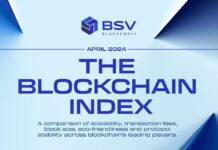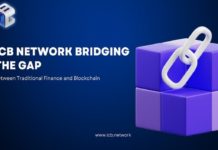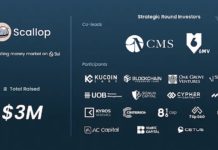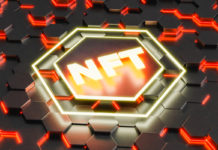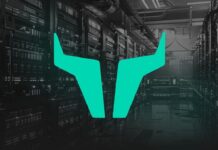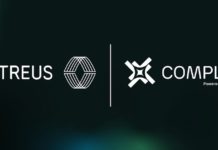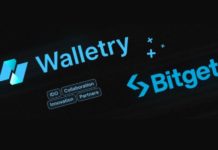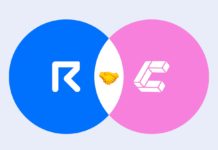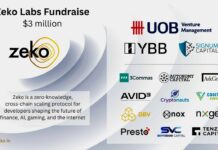Tellor, a leading oracle protocol, envisions a future where oracles must cater to a broad user base spanning various chains. In 2023, the trend of integrating multiple oracles gained momentum, with protocols like Chainlink and Tellor collaborating to offer diverse trade-offs. The Blockchain Oracle Summit, now in its third year, underscores the growing maturity of the conversation around oracle risk.
In the dynamic landscape of DeFi, the role of oracles is evolving rapidly, especially in response to the burgeoning multi-chain ecosystem. In stark contrast to the past, where Ethereum dominated the DeFi space, today’s environment witnesses the maturation of bridges and heightened interoperability, ushering in a wave of diverse chains, including application-specific ones.
Adapting To The Changing Tides & Navigating The BRC20 Expansion
The Tellor team acknowledges the potential for expansion in the Bitcoin ecosystem through the introduction of BRC20 assets. While the timeline for BRC20 integration remains uncertain, Tellor’s inherent flexibility positions it to scale vertically and horizontally within the ever-evolving crypto space. Engaging with potential users and understanding their use-cases forms a crucial aspect of Tellor’s research phase, paving the way for seamless BRC20 asset integration in the future.
Unveiling Tellor Layer: Redefining The Oracle Landscape
Recognizing the need for innovation in response to the dynamic crypto environment, Tellor has embarked on the development of Tellor Layer, an L1 oracle chain. The decision stems from key observations, namely ‘Application-Specific Chains’ (the emergence of numerous chains tailored for specific applications), ‘No Dominant Native System’ (absence of a singular native system, with projects operating as individual L1s or utilizing shared security zones), and finally ‘Advancements In Trustless Bridging’ (disruption of traditional hub-and-spoke models with the rise of light client bridges, blurring the lines between sovereign L2s and L1s).
Tellor Layer brings forth substantial improvements, shifting from incentivizing individual reporters to leveraging the entire validator set for consensus-based data aggregation. This results in faster data point delivery, scalable security with customizable requirements, and seamless data bridging to any chain through a custom light client protocol.
Enhancing Accessibility: User-Friendly Interfaces & Tools
Accessibility is a core focus for Tellor, as demonstrated by the development of user-friendly interfaces and tools to simplify integration processes for developers. By prioritizing approachability, Tellor aims to broaden its audience and facilitate widespread adoption within the crypto community.
Moreover, when it comes to addressing potentially sensitive data, Tellor adopts decentralized identity verification measures to ensure the reliability and trustworthiness of reporters without compromising user privacy. This commitment aligns with Tellor’s core philosophy of decentralization, where data reporters can be anyone, fostering a robust and censorship-resistant ecosystem.
Beyond practical usage, Tellor additionally places a strong emphasis on educational resources for users, developers, and the community. Through comprehensive documentation, user-friendly guides, and the ‘Tellor School initiative’ in blog and video formats, Tellor strives to deepen understanding and knowledge of decentralized oracles and blockchain technology.
NFT Integration & Custom Data Specifications
Tellor explores the integration of NFT-related data onto the blockchain, acknowledging the challenges of manipulating NFT floor prices. Leveraging the flexibility of its protocol, Tellor allows users to define custom data specifications, enabling the creation of robust price indices for NFTs while providing transparency and validation mechanisms.
Naturally, security is paramount for Tellor, evident in the rigorous audits conducted on all smart contracts by industry-leading security experts. The protocol’s design prioritizes robustness, and the team maintains open communication with auditors to address vulnerabilities promptly. The commitment to security extends to ongoing efforts in testing and addressing potential risks, reinforcing Tellor’s dedication to user safety and protocol integrity.
Future Plans & Korean Market Entry
While Tellor has not yet made significant inroads into the Korean market, the team expresses enthusiasm for building relationships and engaging with the local crypto communities. Conversations are underway to explore opportunities for growth and collaboration in this region, aligning with Tellor’s commitment to fostering global partnerships.
Also, unlike traditional roadmaps, Tellor opts for regular updates through community channels such as GitHub, Discord, X, and YouTube. The highlight for 2024 is Tellor Layer, a standalone oracle blockchain promising limitless scalability, blazing speed, and unparalleled security potential. The team envisions Tellor Layer as a game-changer, allowing seamless integration with an extensive array of chains.
To combat hacking and fund theft, Tellor also employs a proactive approach, collaborating closely with projects to follow best practices. The emphasis is on ensuring multiple verifiable data sources, secure oracle implementations, and robust fallback mechanisms. While Tellor does not hold user funds, its commitment to decentralized principles empowers projects to implement Tellor independently, emphasizing security and reliability.
About Tellor
Tellor is a permissionless and transparent oracle protocol that allows smart contracts to easily obtain any data at any time. The protocol encourages an open, permissionless network of data reporting and validation, ensuring that data can be provided and checked by anyone.
Tellor’s core team became interested in crypto because it promised to change the world, and they wanted to be a part of it. Their intention was to hence develop DeFi products, specifically tokenized derivatives. Tellor therefore allows users to get any market data from any API(s), any data type they may require, and protocol data from a network of reporters running Telliot, an open-source reporting client.
In a space crowded with oracle protocols, Tellor aims to distinguish itself through its commitment to decentralization, censorship resistance, and flexibility. Users can appreciate Tellor’s ability to provide a wide range of verifiable data, easy deployment across diverse chains, and the nuanced consensus approach to subjective data.
As Tellor continues to innovate, engage with global markets, and shape the future of decentralized oracles, its journey unfolds as a testament to resilience, adaptability, and unwavering commitment to advancing blockchain technology.











